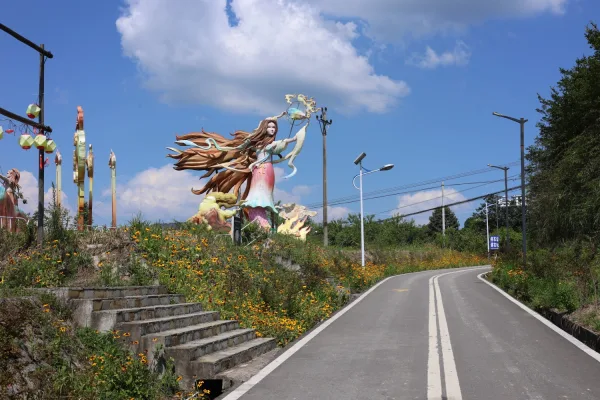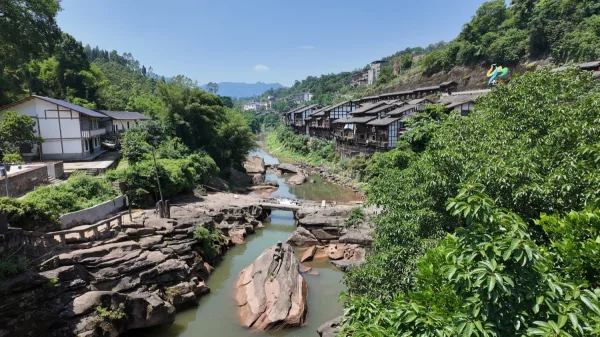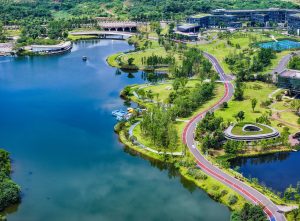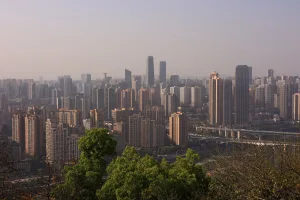Qijiang Dongxi Ancient Town: 1300 Year Old Largest Ancient Town
Qijiang Dongxi Ancient Town Highlights
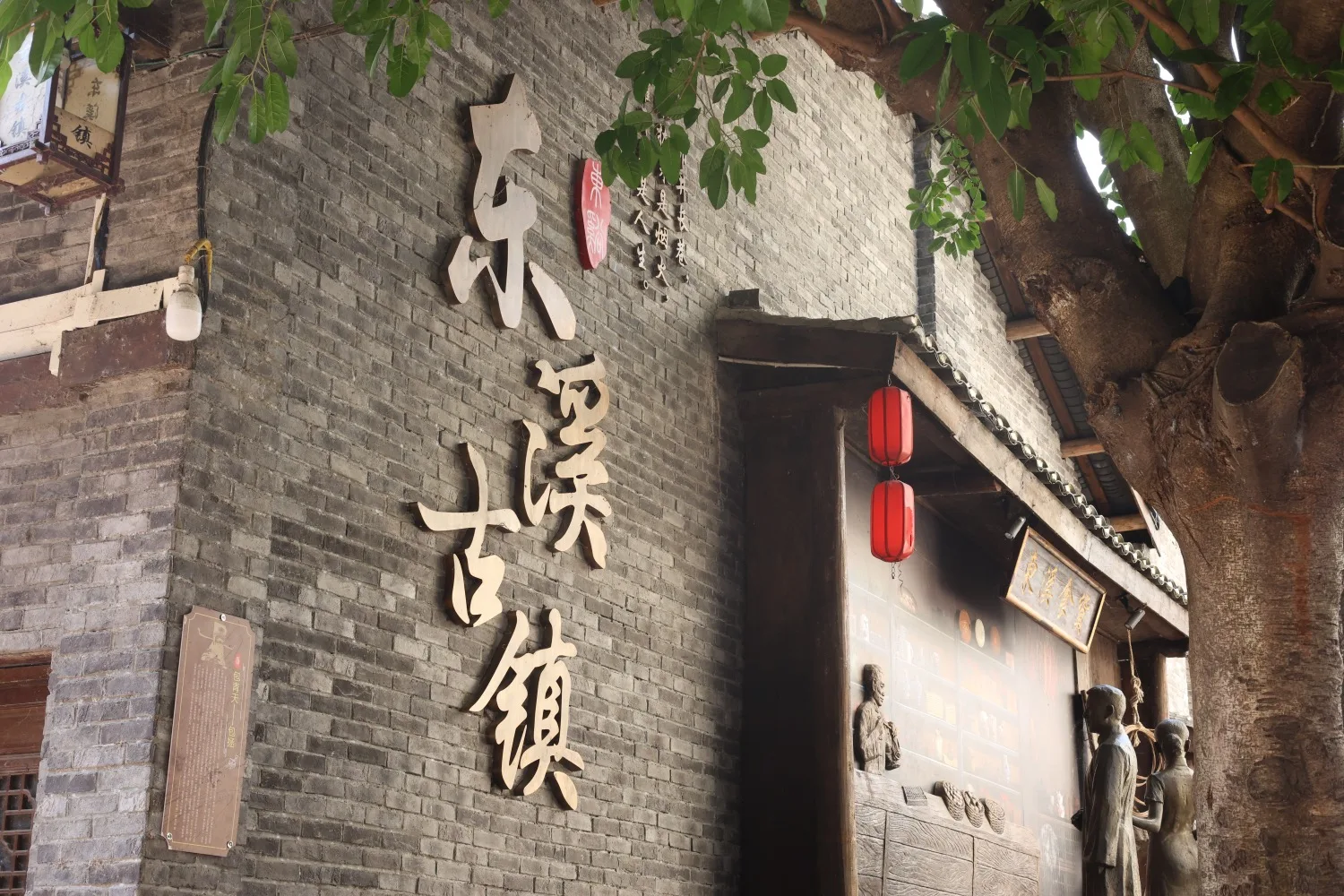
Nestled in Chongqing’s Qijiang District, just 20 kilometers from the Qijiang District city center, Dongxi Ancient Town is a hidden gem with over 1,300 years of history.
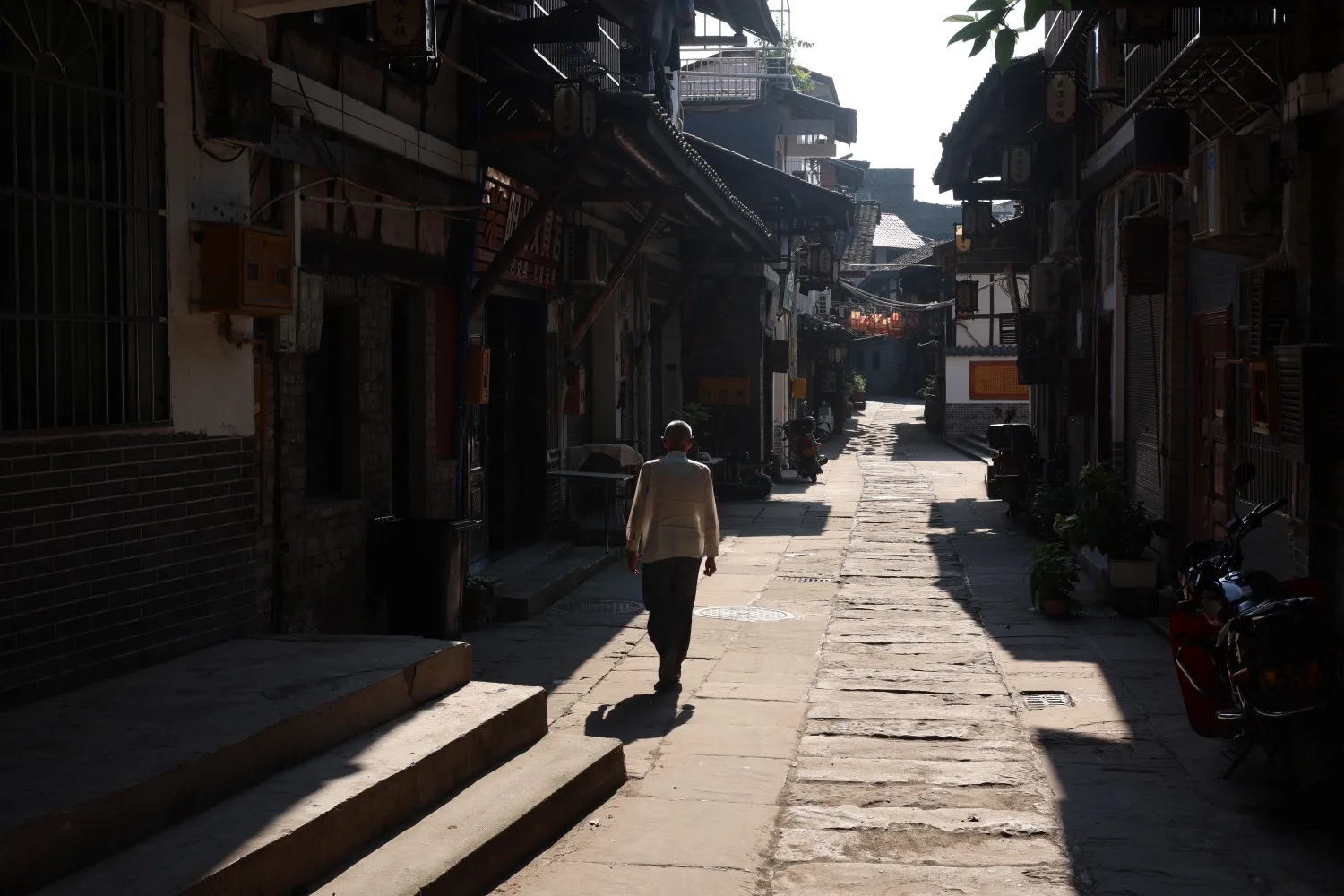
Founded during the Ming Dynasty, this serene town is a living testament to China’s rich cultural past, offering a peaceful escape from the bustle of modern life.
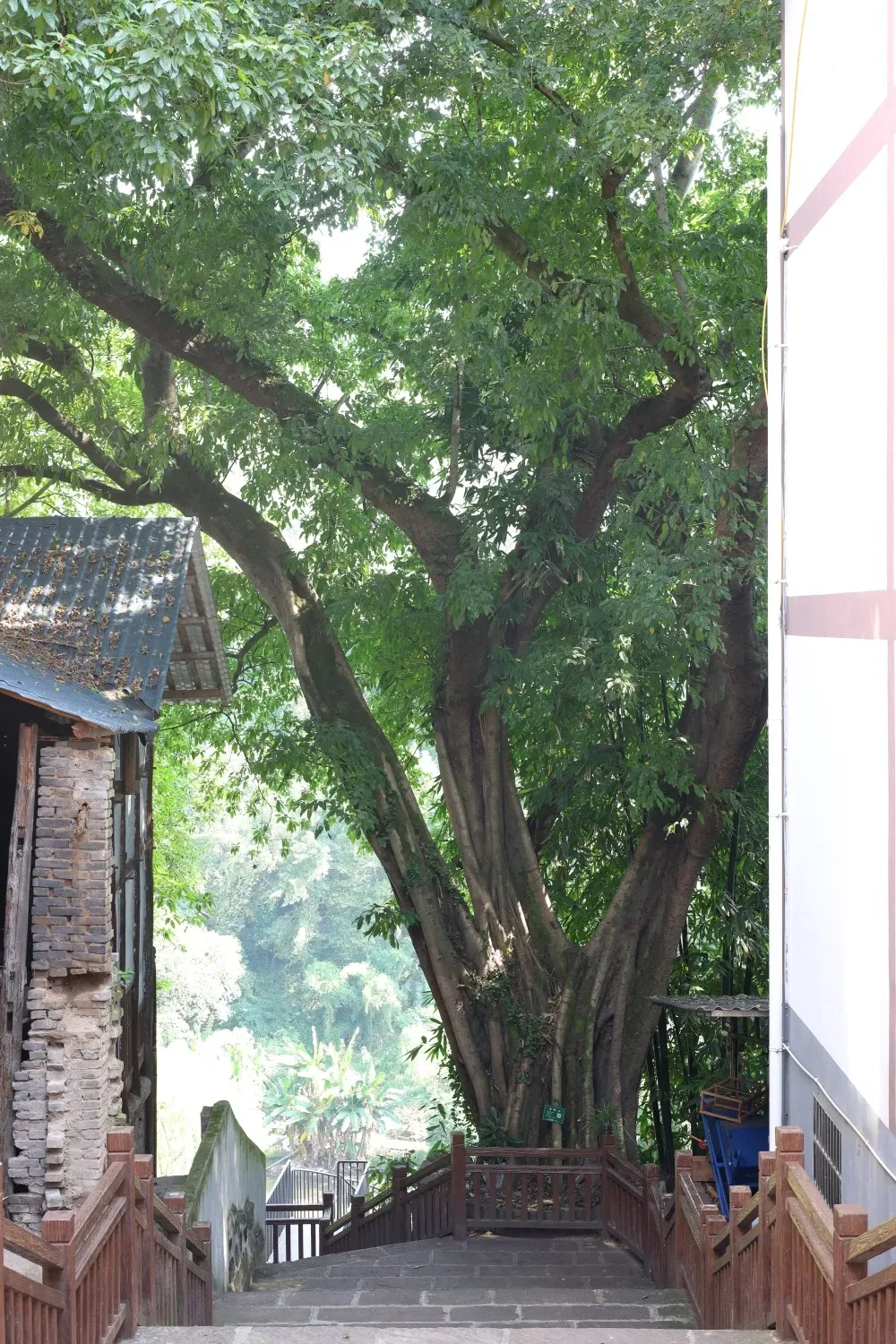
What sets Dongxi apart is its breathtaking natural and architectural beauty. The town is cradled by over 5,000 ancient Huangjue (Huangge) trees, forming the largest such grove in Southwest China.
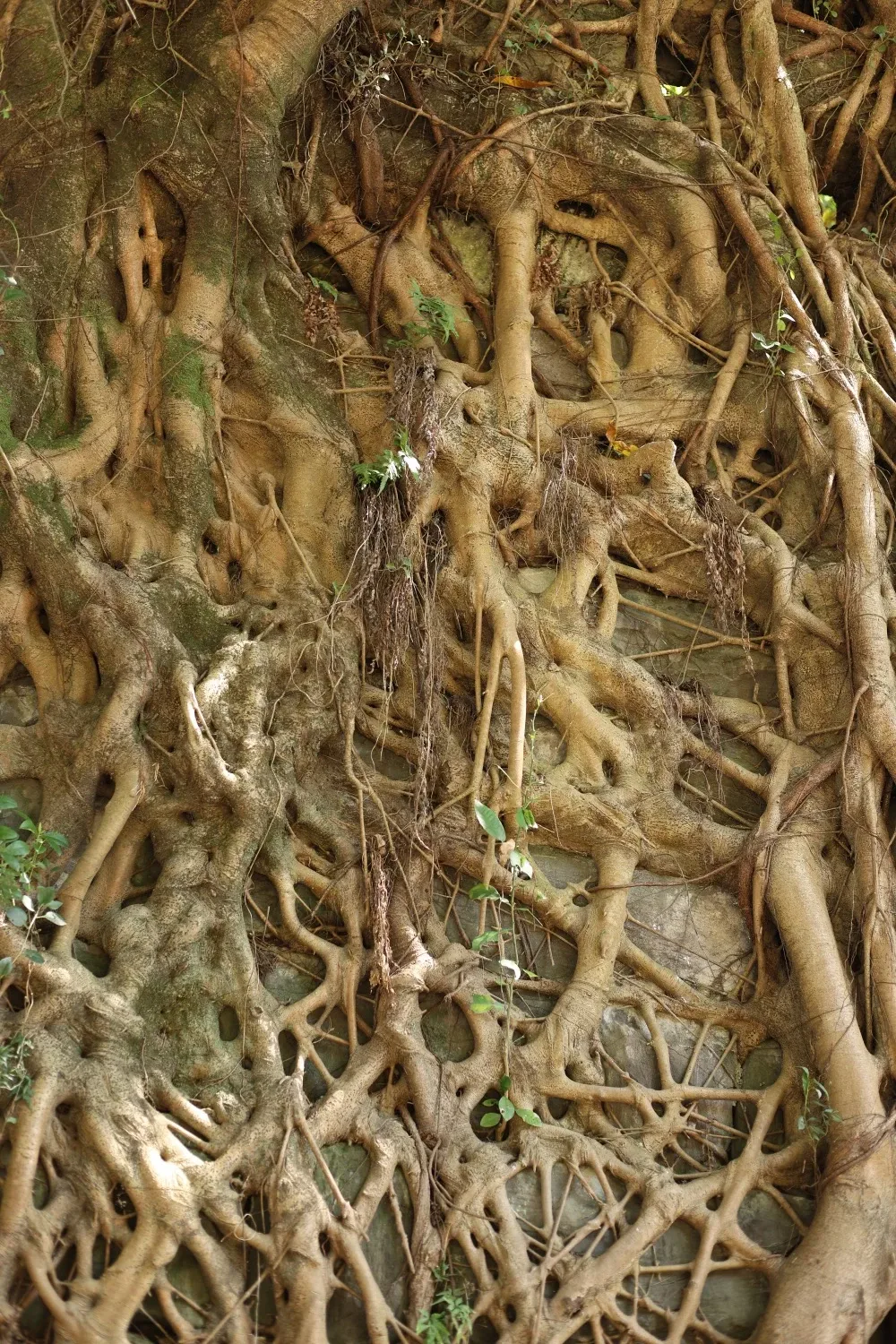
These majestic trees, with their sprawling branches and deep roots, create a canopy of green that weaves through the town’s cobblestone streets, lending an almost magical ambiance.
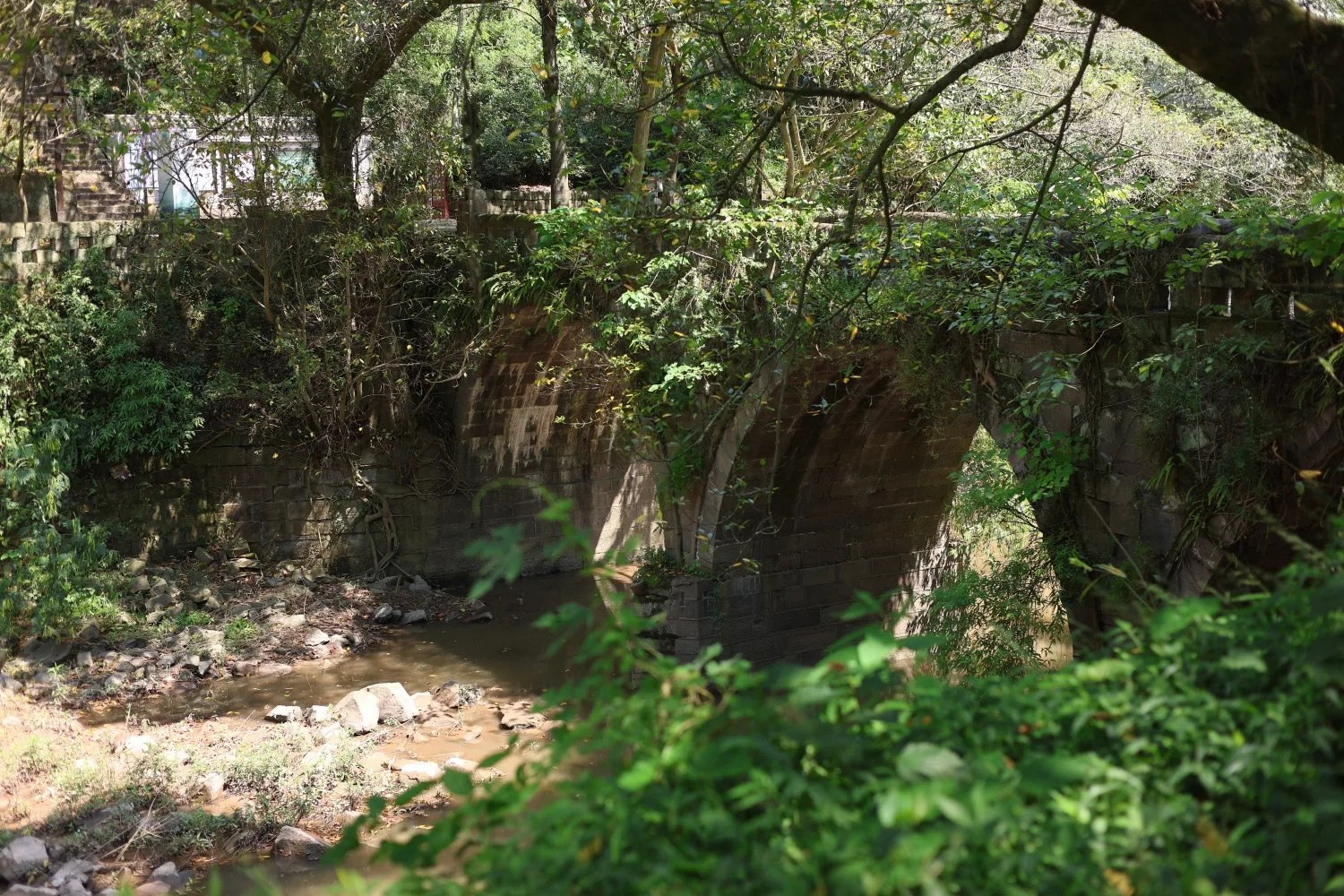
Wander through Dongxi’s well-preserved buildings, where intricately carved wooden facades and weathered stone pathways whisper stories of centuries past.
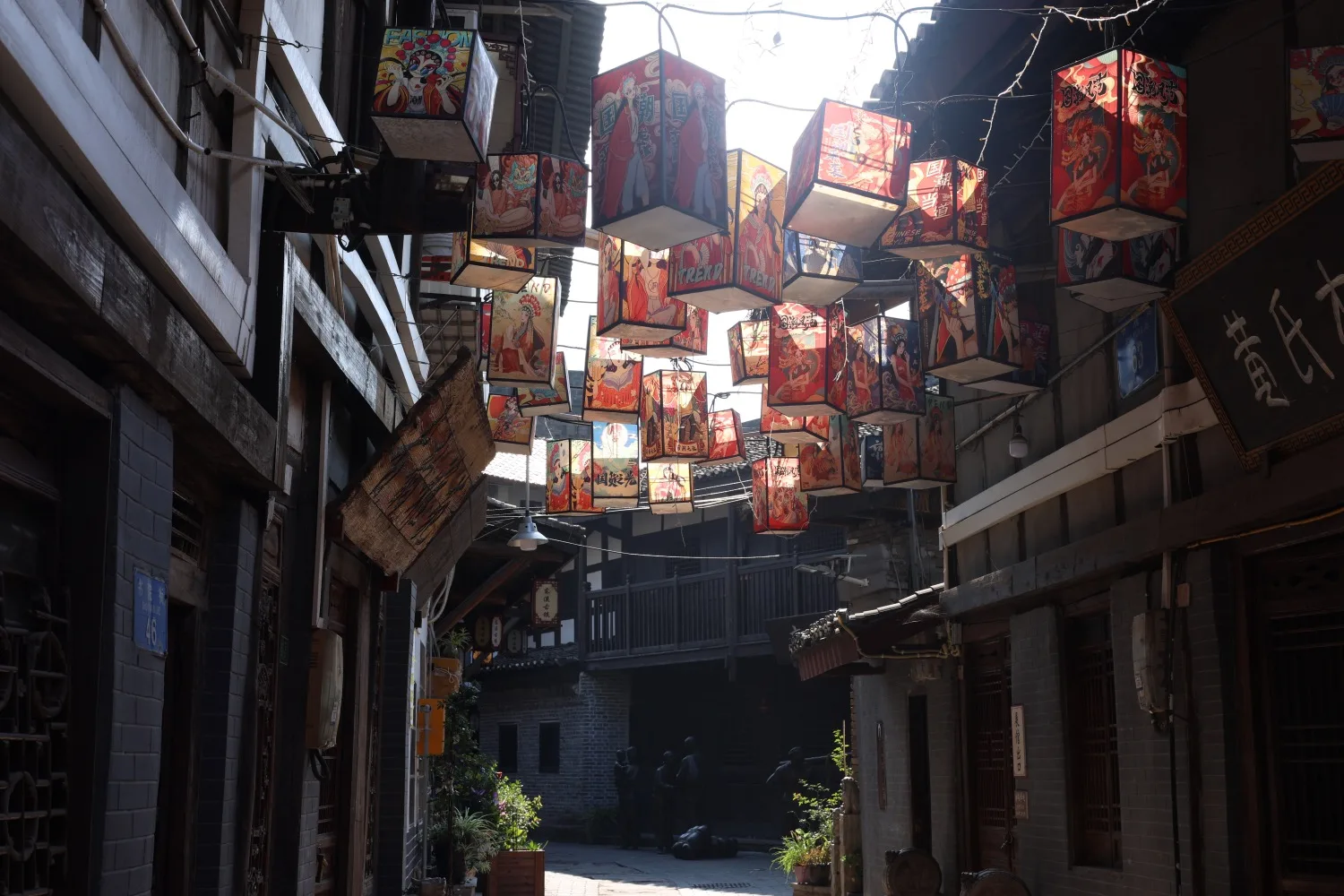
Unlike more tourist-heavy destinations, Dongxi remains blissfully uncrowded, allowing you to soak in its authentic charm at your own pace.
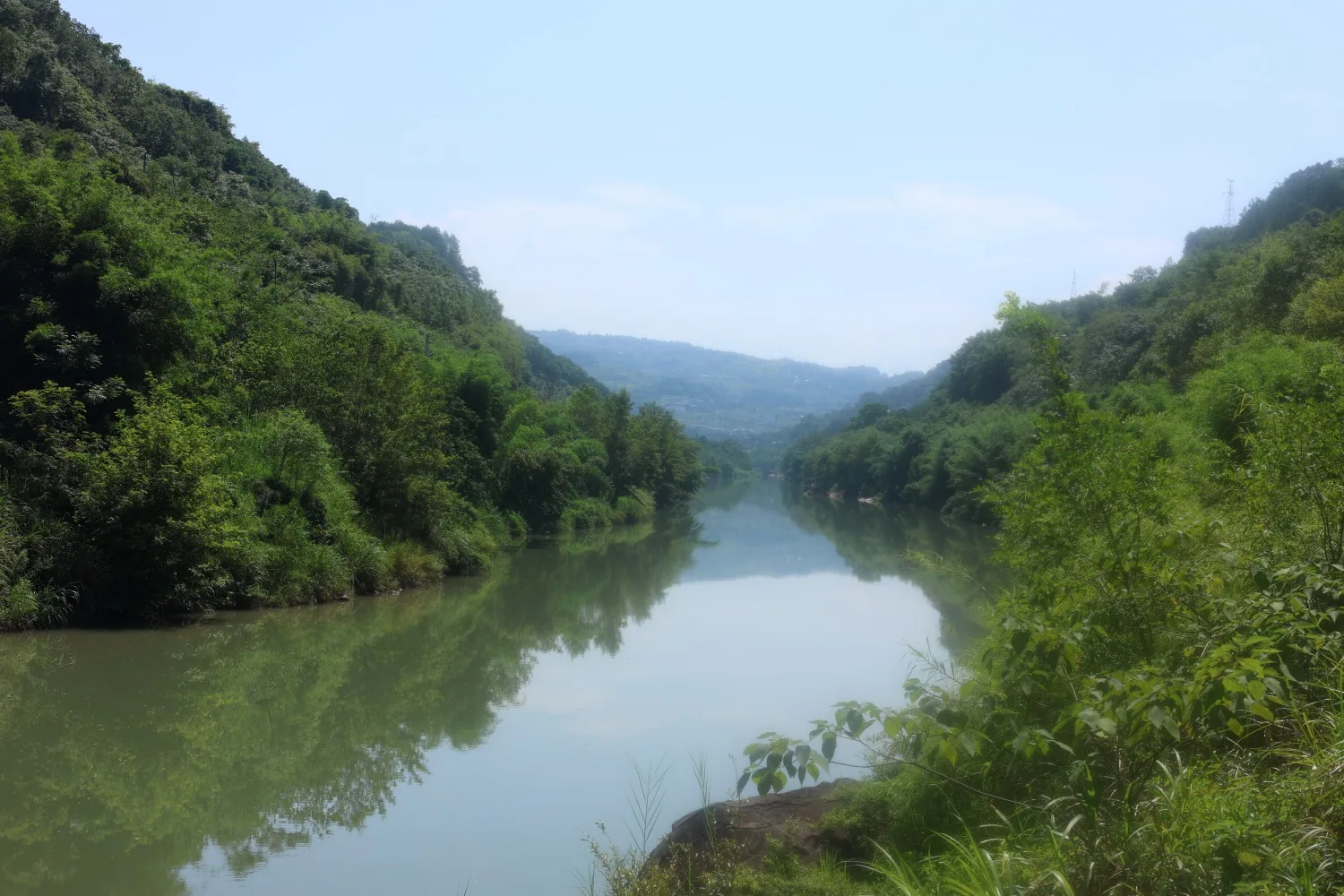
Whether you’re a history enthusiast, a nature lover, or simply seeking a tranquil retreat, Dongxi Ancient Town is a must-visit destination that promises to captivate your senses.
Getting to Dongxi Ancient Town
Driving
Driving is the recommended way to get to Dongxi Ancient Town Parking Lot.
Navigate to the Dongxi Ancient Town parking lot.
From Qijiang, it is 20 20-minute drive, and from Chongqing, it takes 1.5 hours.
Train
Take the high-speed train to Ganshui Station 赶水站.
From the high-speed train station, transfer to a local bus or taxi to arrive at Dongxi Ancient Town.
Dongxi Ancient Town Facilities
Parking
Free parking is available by the ancient town entrance near Xiaoju Charging Station.
Restroom
Limited restrooms are available at Dongxi Ancient Town.
Restaurant
Restaurants are available at Dongxi Ancient Town.
Pets
Pet-friendly scenic area.
Drone
No active signs prevent flying a drone.
Accessibility
For travelers with mobility needs, it’s important to be aware of the town’s accessibility challenges.
The town’s charm lies in its well-preserved, centuries-old stone pathways, which are often uneven, paved with cobblestones, and not consistently flat.
Many sites, such as Wantian Palace, feature staircases and raised platforms, and the Yanma Ancient Trail includes rugged terrain that may be difficult to navigate for those using wheelchairs, walkers, or with limited mobility.
Top Places to See at Dongxi Ancient Town
Wantian Palace
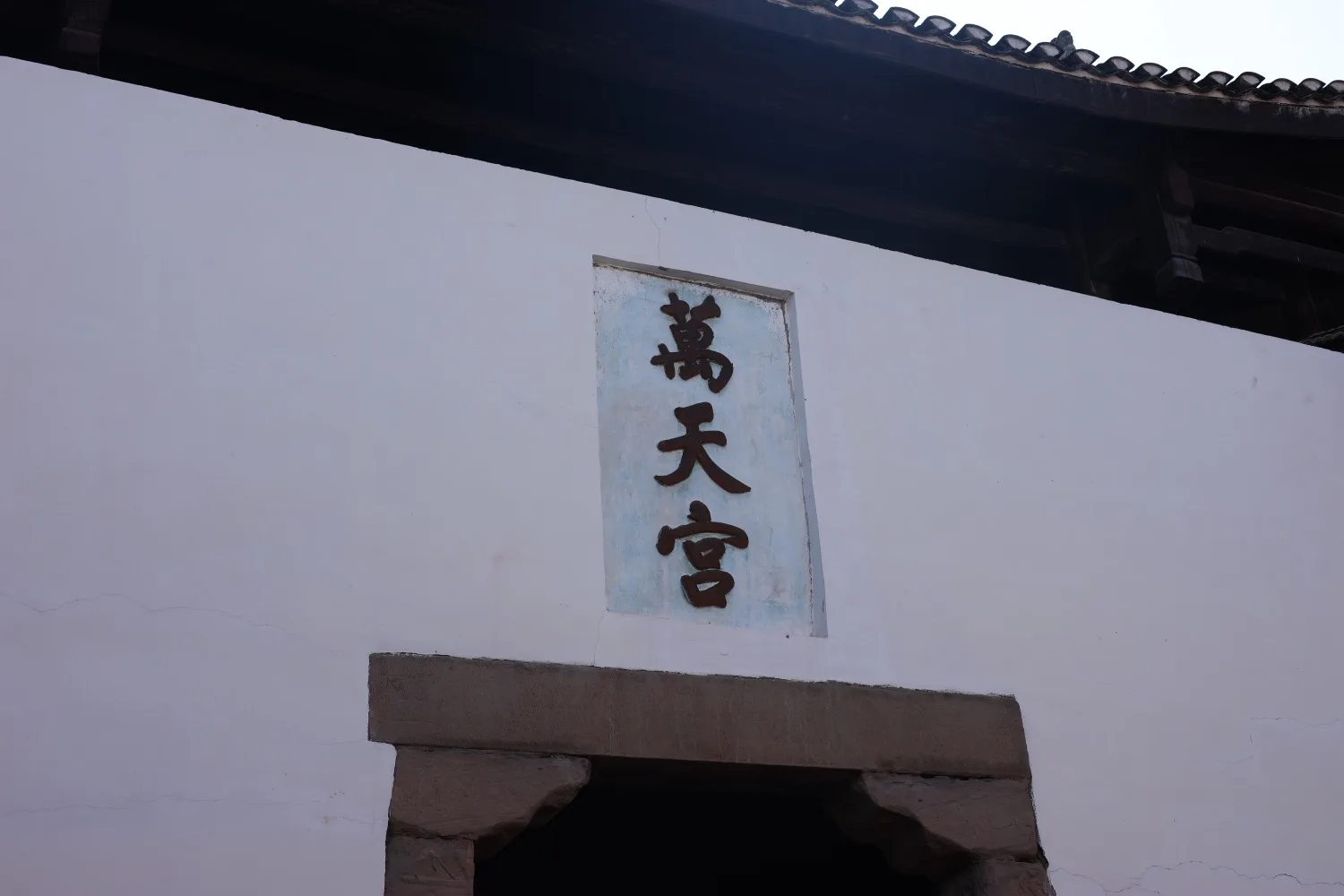
Wantian Palace stands as a magnificent relic of Sichuan’s cultural heritage. Built in 1663 during the Qing Dynasty’s Kangxi era, this 1,187.7-square-meter complex was originally a guildhall for Sichuan natives, known as the Shu people.
This wooden and earthen structure, oriented east to west, follows a traditional courtyard layout, enveloped by the quiet backstreets of Dongxi’s alleys. The palace comprises an upper hall, a lower hall, and wing rooms, creating a harmonious four-sided courtyard that feels like a step back in time.
The lower hall houses a beautifully preserved wooden stage, a cultural centerpiece adorned with intricate carvings. These detailed reliefs depict iconic Three Kingdoms scenes, such as “Guan Yu’s Solo Journey to the Feast” and “Zhuge Liang’s Empty Fort Strategy,” bringing ancient tales to life.
Nanhua Palace
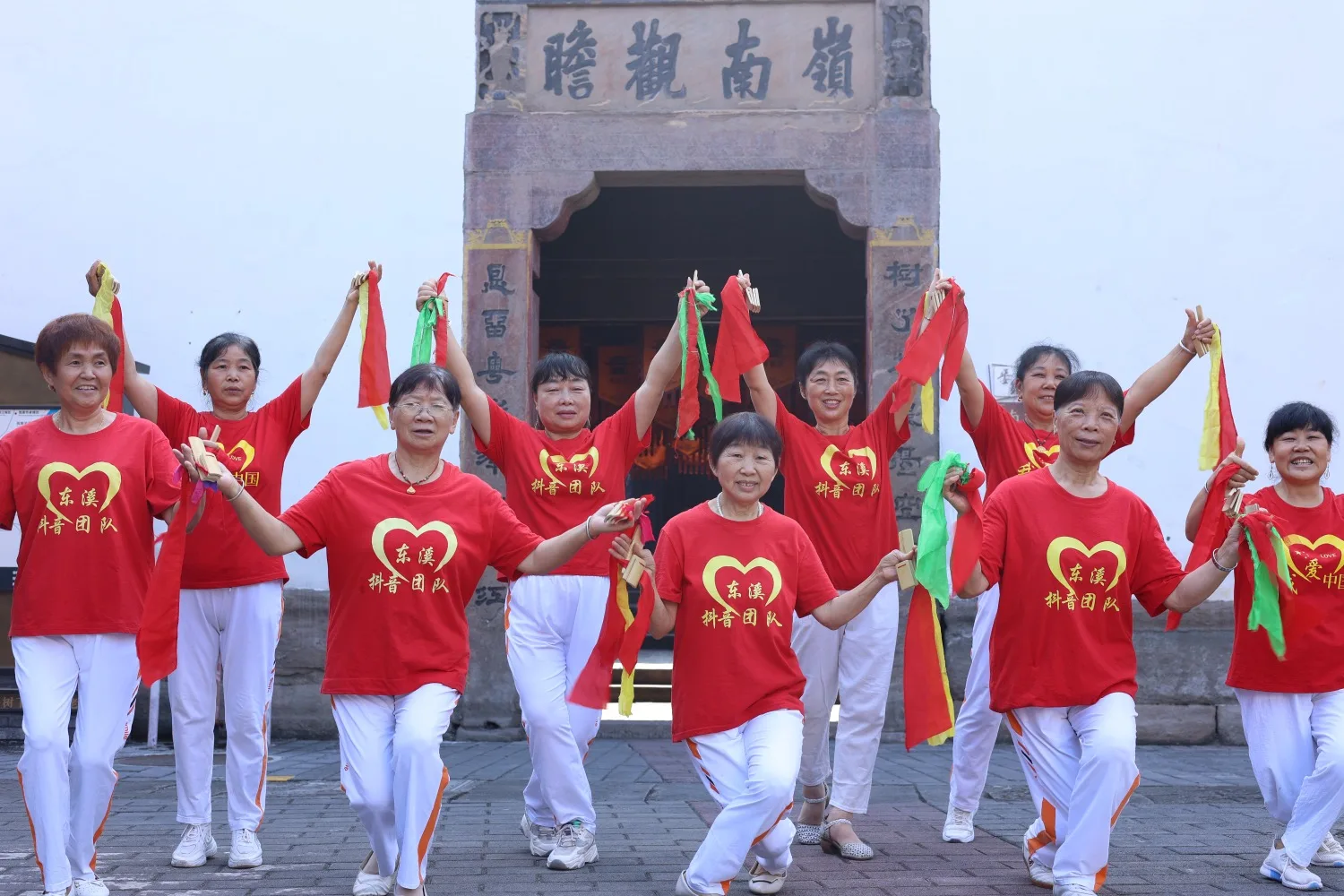
Tucked within the serene embrace of Qijiang’s Dongxi Ancient Town, Nanhua Palace stands as a cultural jewel with roots stretching back to the Qing Dynasty.
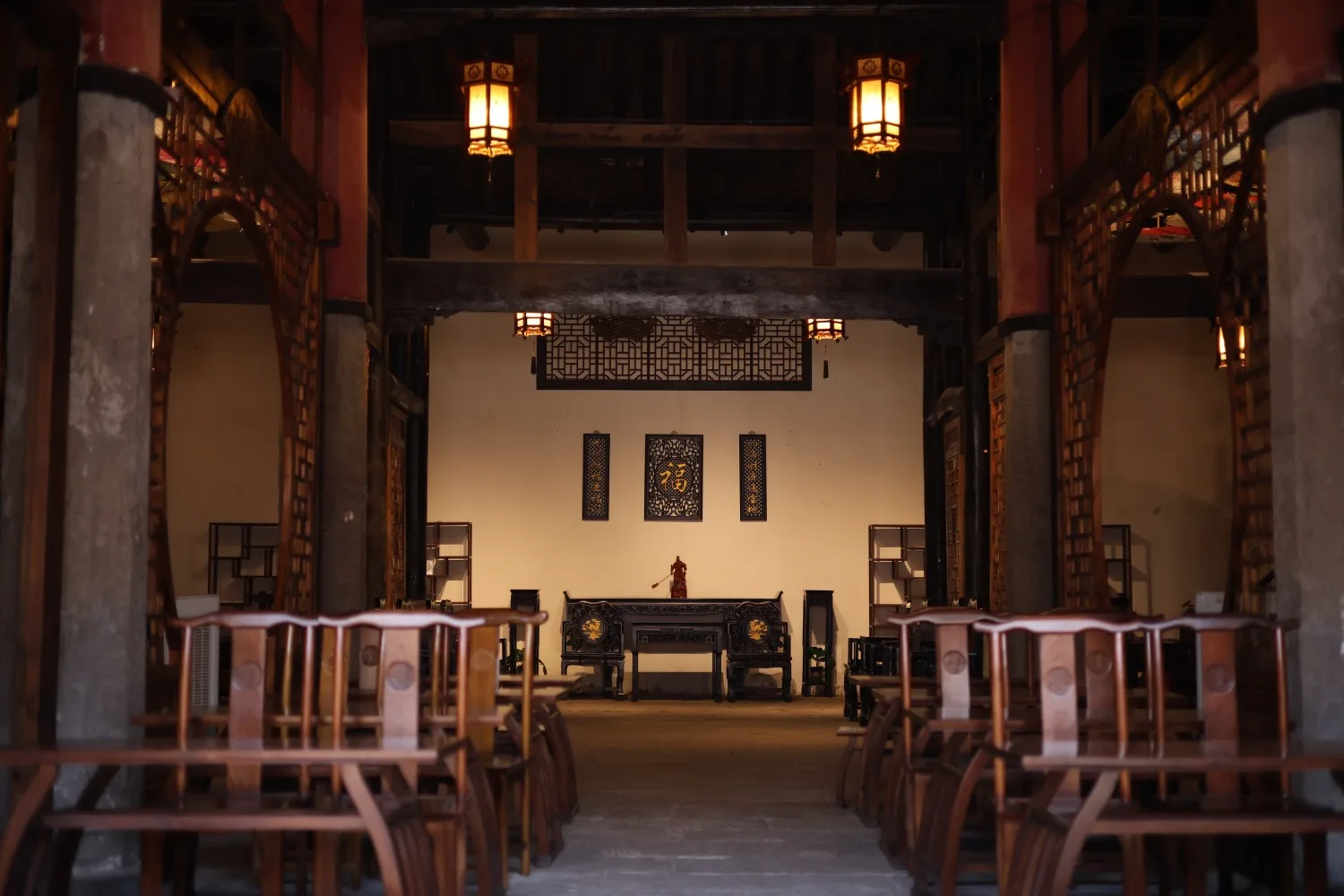
Built in 1736 during the reign of Emperor Qianlong, this 800-square-meter complex served as a gathering place for immigrants from Guangdong and Guangxi who settled in Dongxi Ancient Town. As a provincial-level cultural relic of Chongqing, Nanhua Palace is not just a historical site but a vibrant testament to the town’s rich heritage.
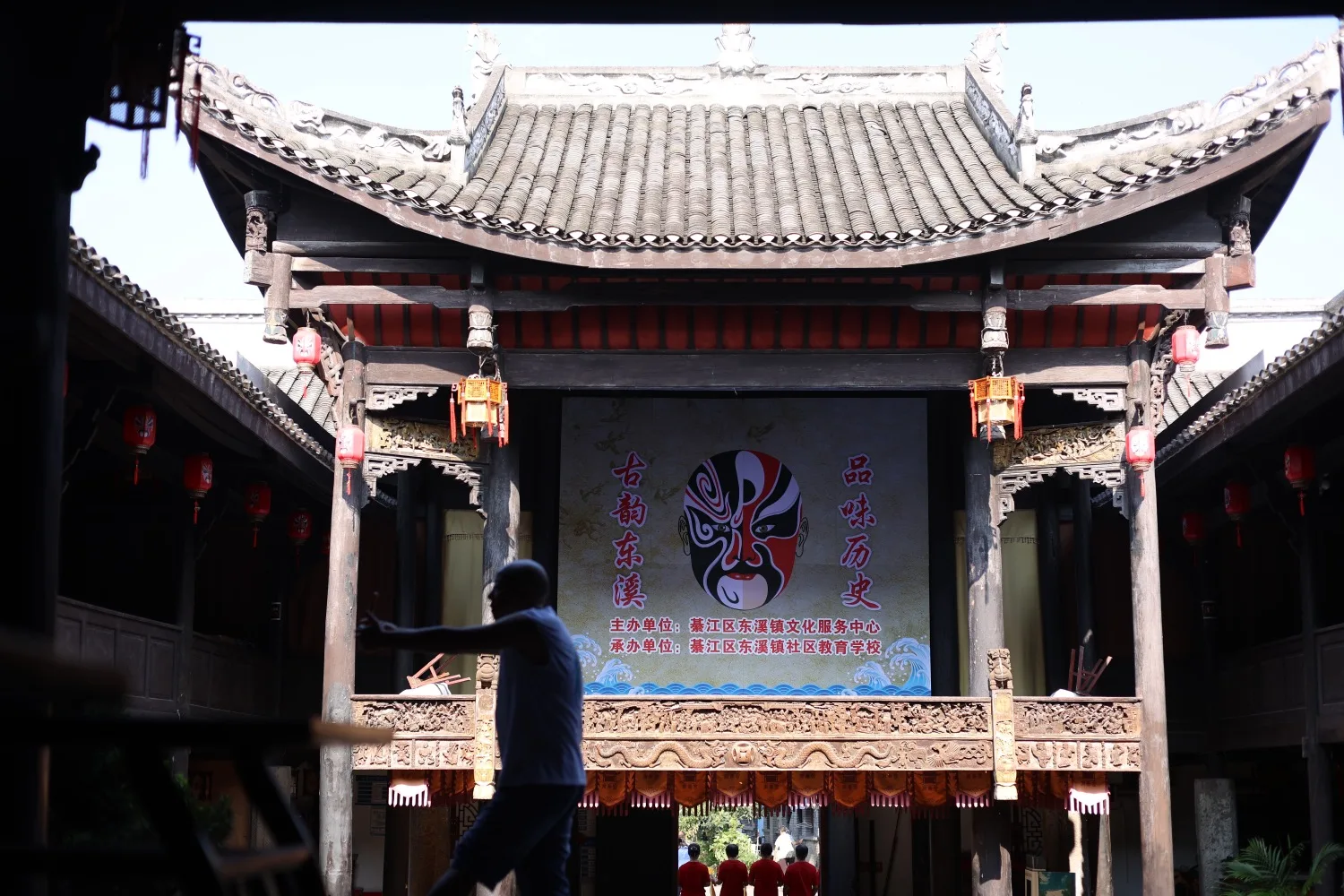
Facing west in a traditional courtyard layout, the palace features a brick-and-wood structure with an upper hall, lower hall, and side wing rooms. During the Anti-Japanese War, this stage was a platform for Dongxi’s cultural troupe to rally the community through performances. The stage’s intricately carved wooden panels depict ancient stories with vivid detail, while an octagonal “caisson” ceiling above enhances acoustics, creating a natural surround-sound effect that feels almost modern.
Maxiangyue Post Office
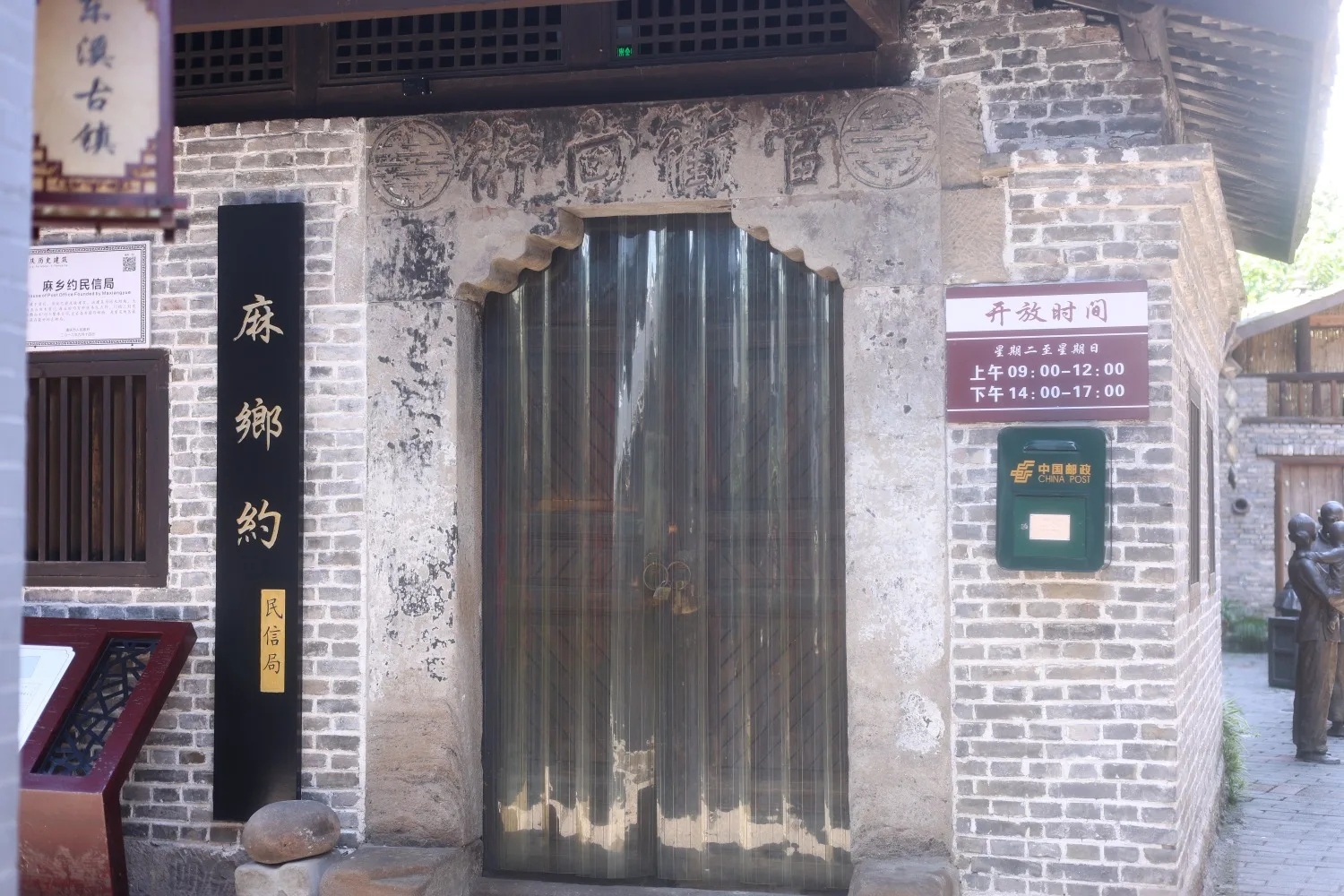
The Maxiangyue Post Office stands as a rare gem of Qing Dynasty architecture and a testament to Chongqing’s communication history.
Built in the traditional Bayu style, unique to the Sichuan-Chongqing region, this brick-and-wood structure is one of the oldest and best-preserved ancient post offices in Chongqing, whispering tales of a time when letters and news traveled by horse and hand.
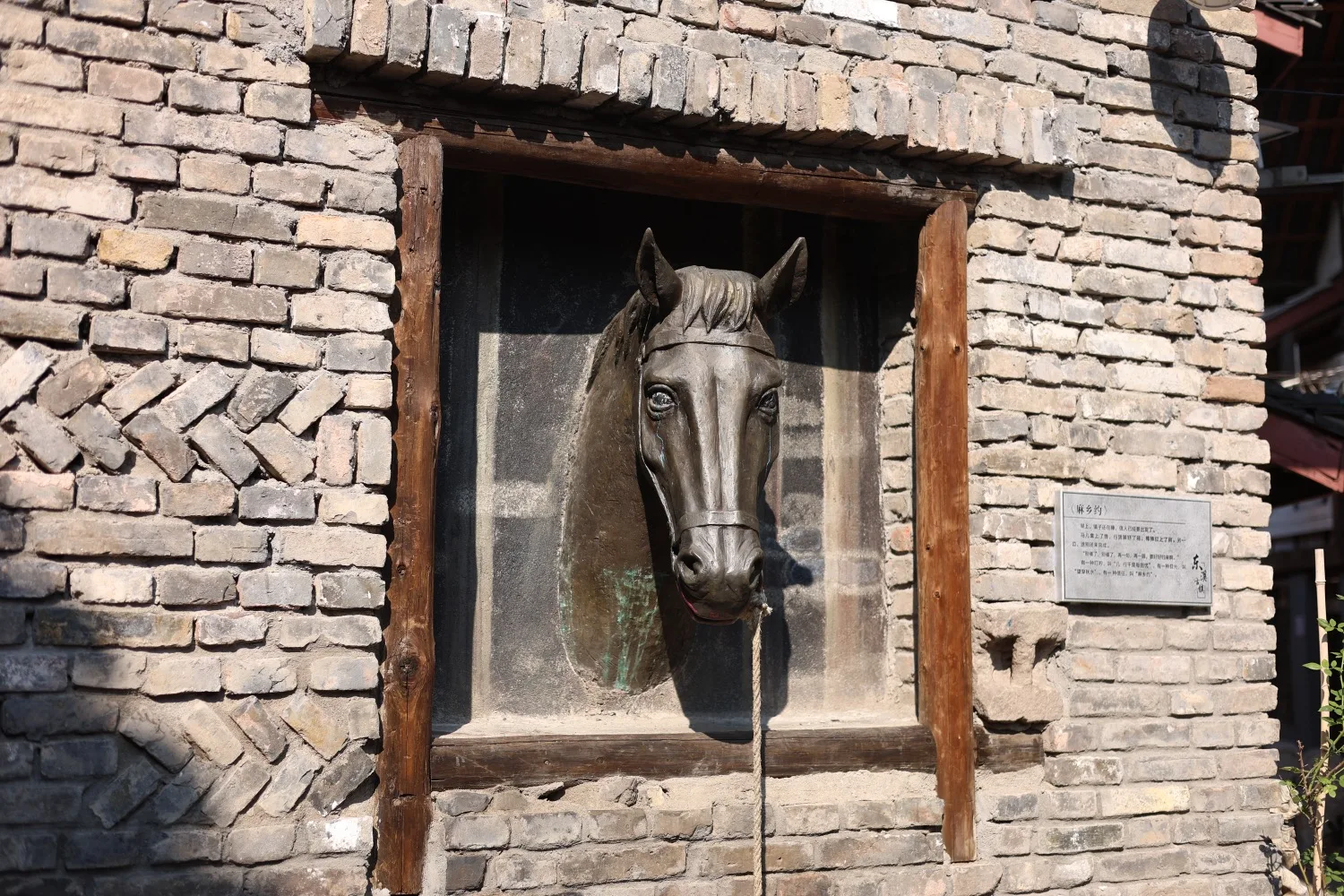
The post office’s facade is a work of art, featuring a striking five-panel wooden door, each panel adorned with intricate diagonal striped patterns that catch the eye. Above the door, a lintel bears the elegant inscription “当衢向术” in traditional Chinese characters, loosely translated as “Facing the Path, Guiding the Way,” symbolizing the post office’s role as a vital link in ancient trade and communication routes.
Dongxi Ancient Town Brick Wall
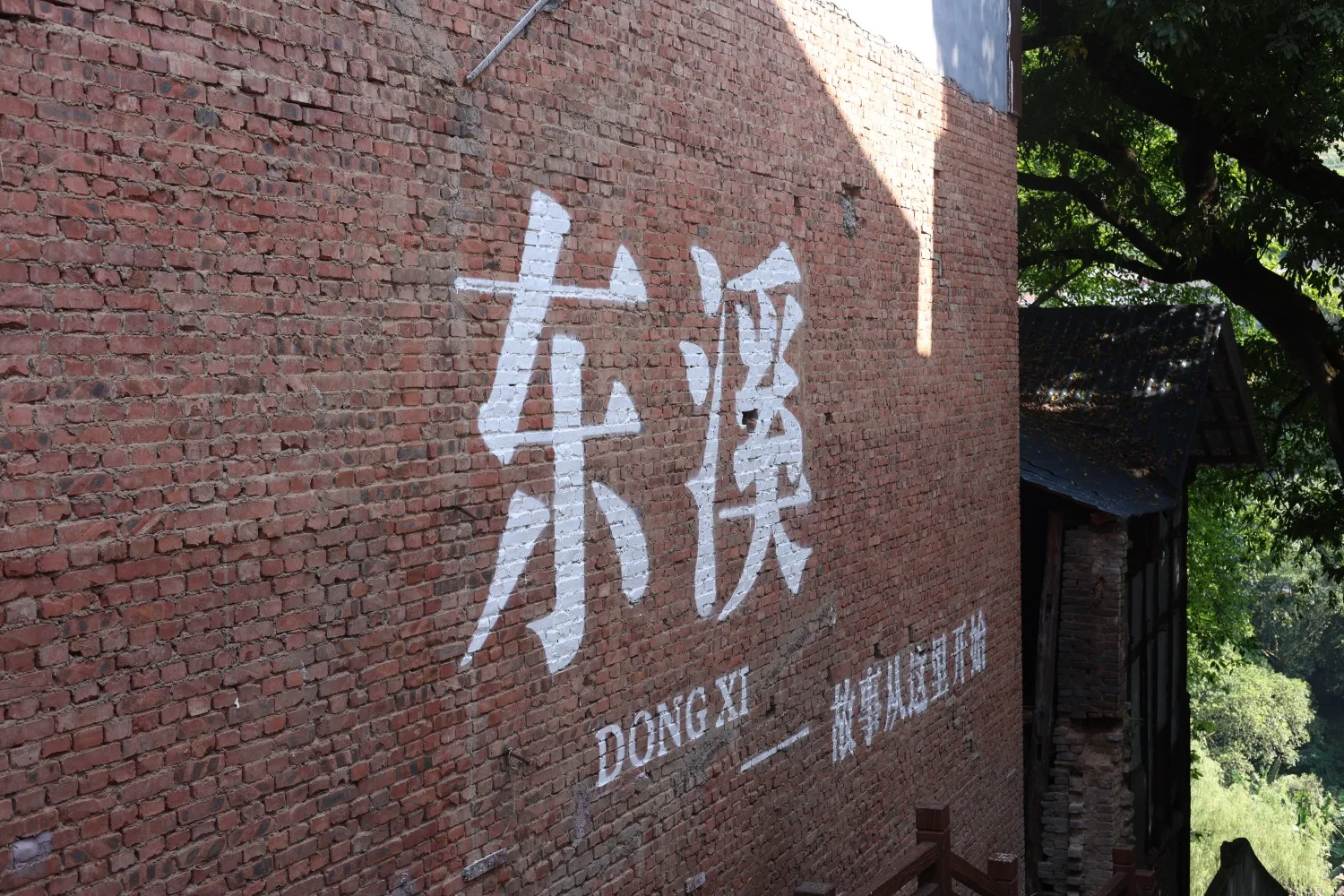
The brick wall with Dongxi ancient town characters on it. It is a popular place for snapping pictures. Remember to turn right here and walk down the stairs.
Here you will encounter a hundred-year-old Huangge Tree.
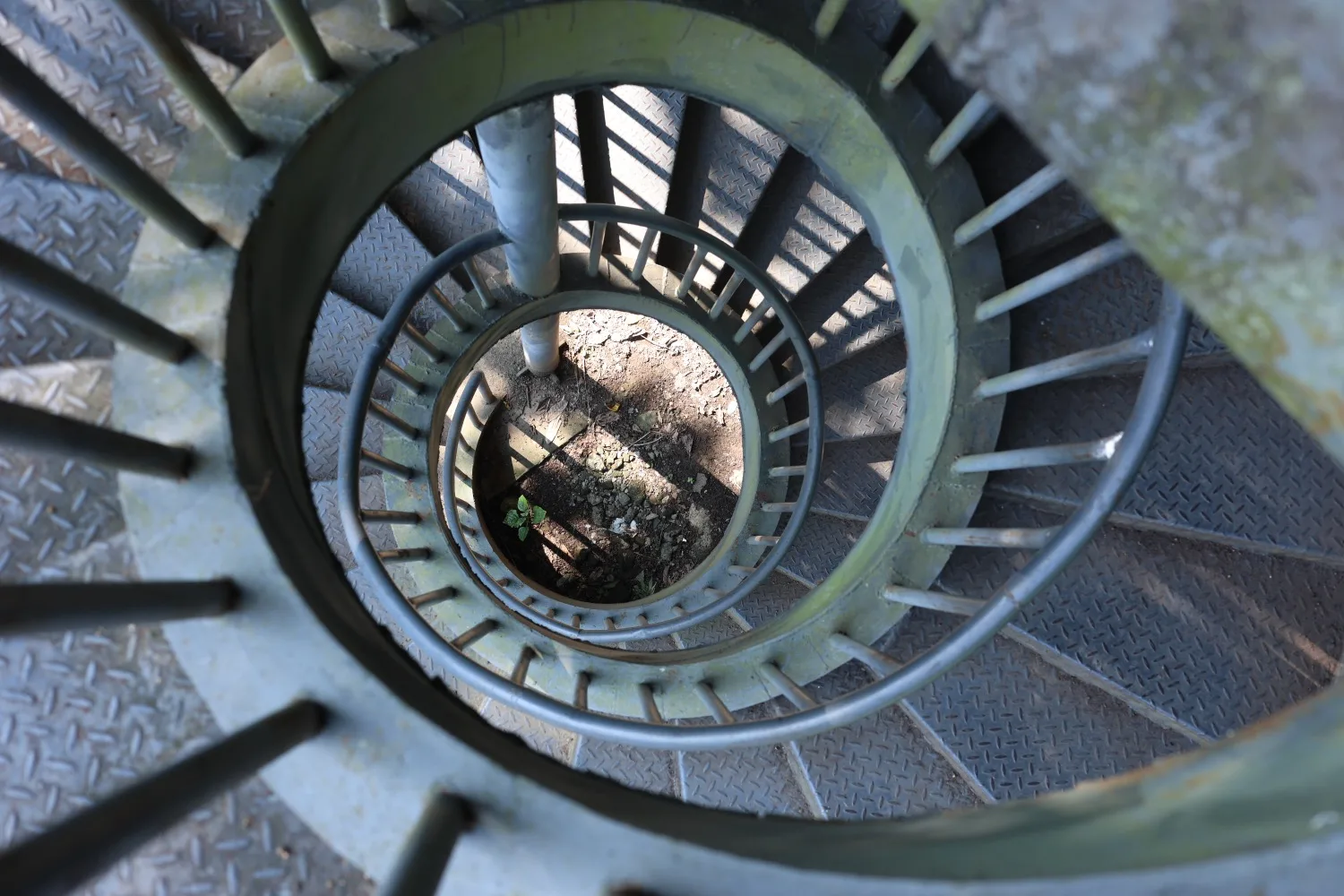
Keep walking down and you will meet the spiral stairs.
Shangping Bridge
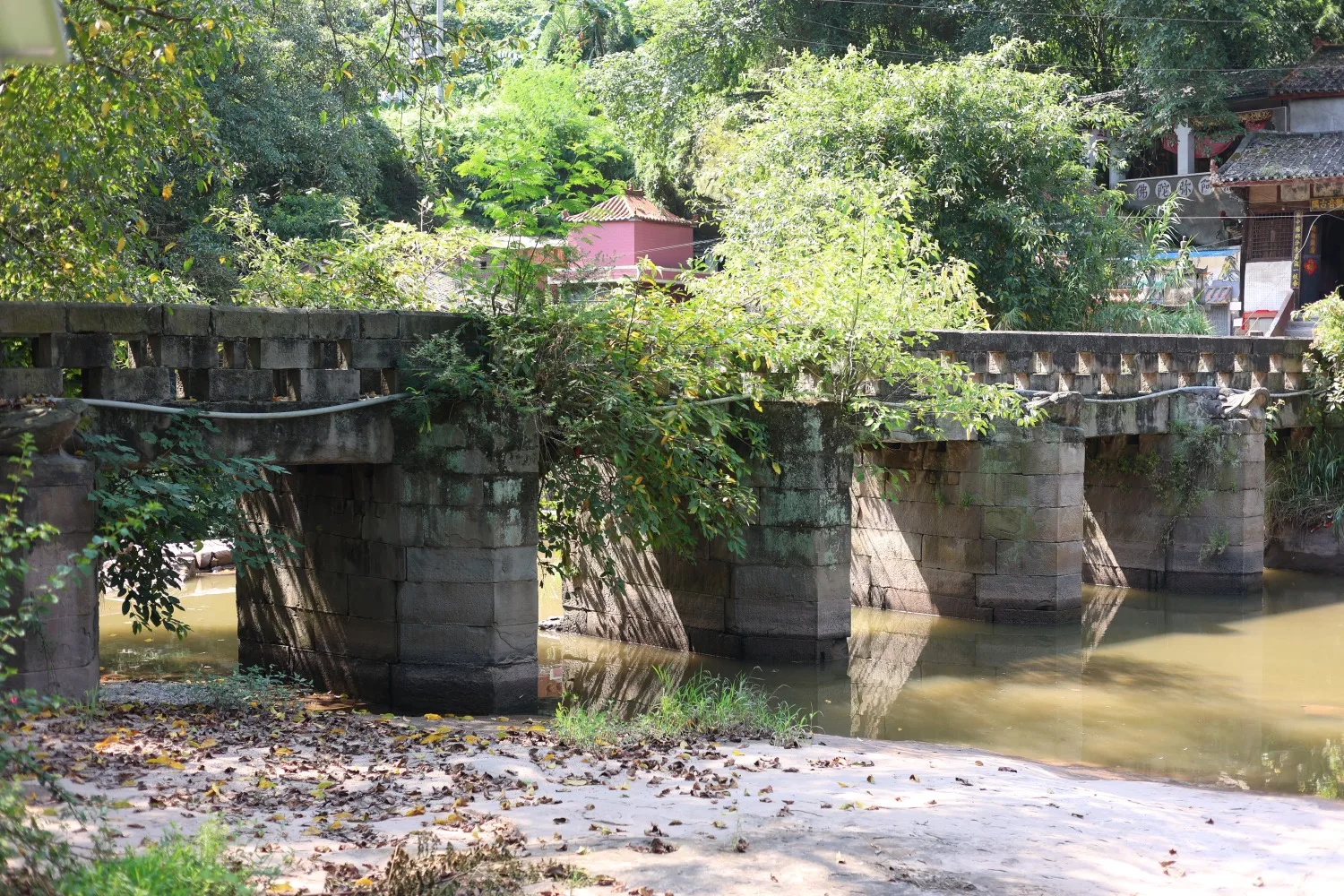
Shangping Bridge is a living relic of history in Qijiang’s Dongxi Ancient Town. Built in 1667 during the Qing Dynasty’s Kangxi era, this 358-year-old stone bridge stretches 24 meters long and 2.5 meters wide, standing as a testament to the enduring craftsmanship.
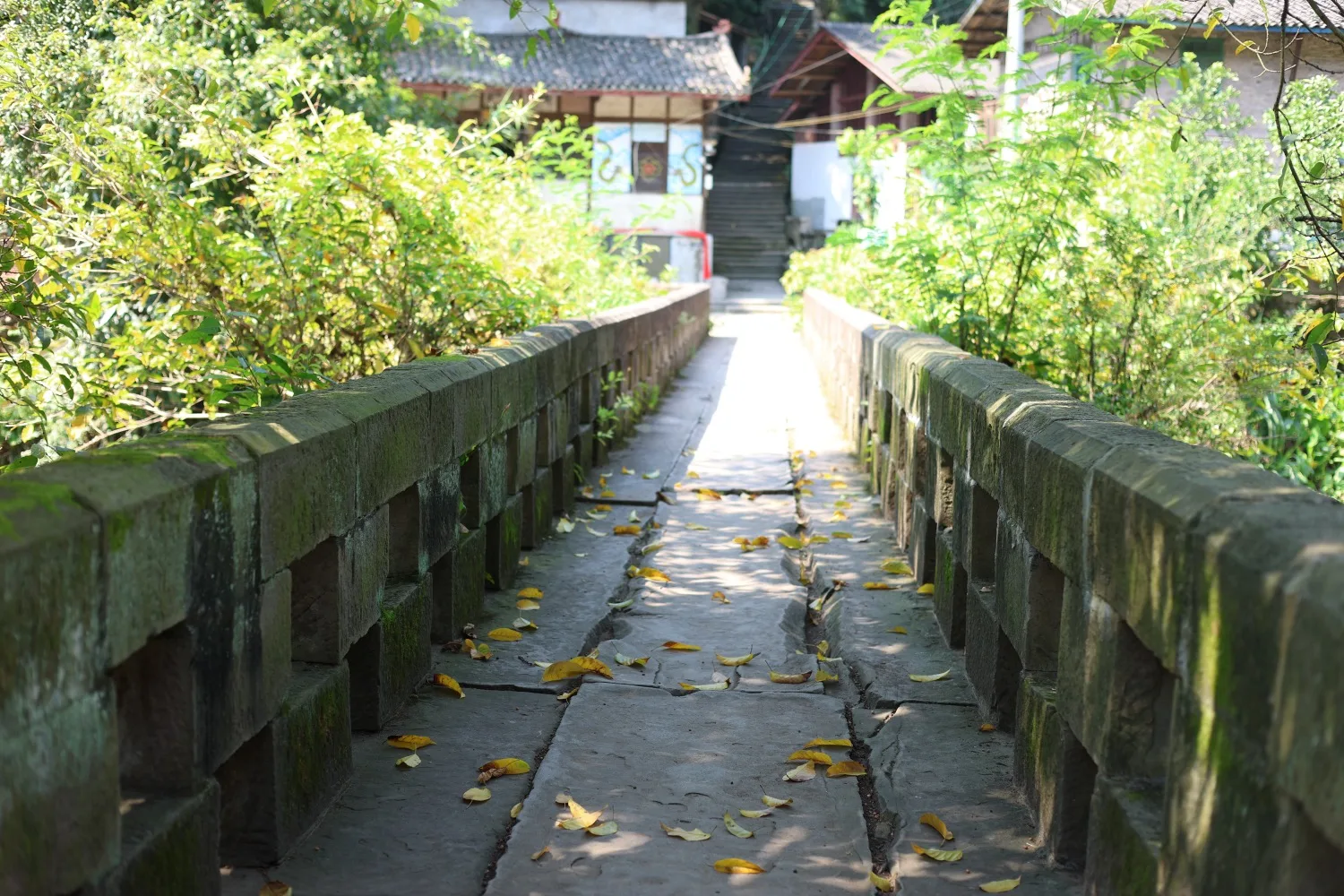
As a vital link between two provinces, Shangping Bridge has carried travelers, merchants, and stories for centuries, making it an unmissable stop in the heart of Dongxi.
Dajingyin Cave Waterfall
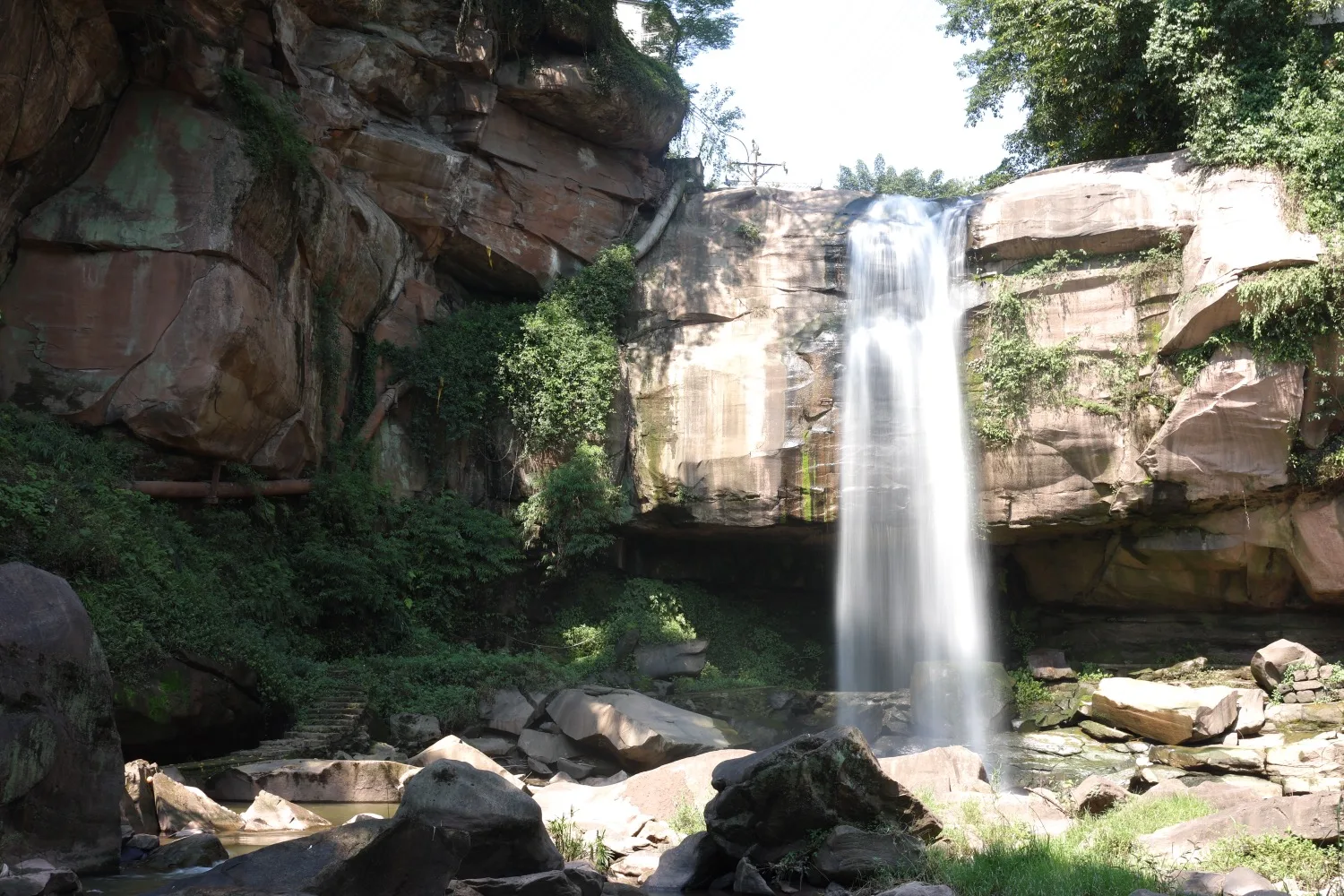
Dajingyin Cave Waterfall is a natural spectacle that complements the town’s historic charm. Cascading over a massive rock formation that forms a delicate arch, this waterfall is a hidden treasure framed by the lush greenery of ancient Huangjue trees.
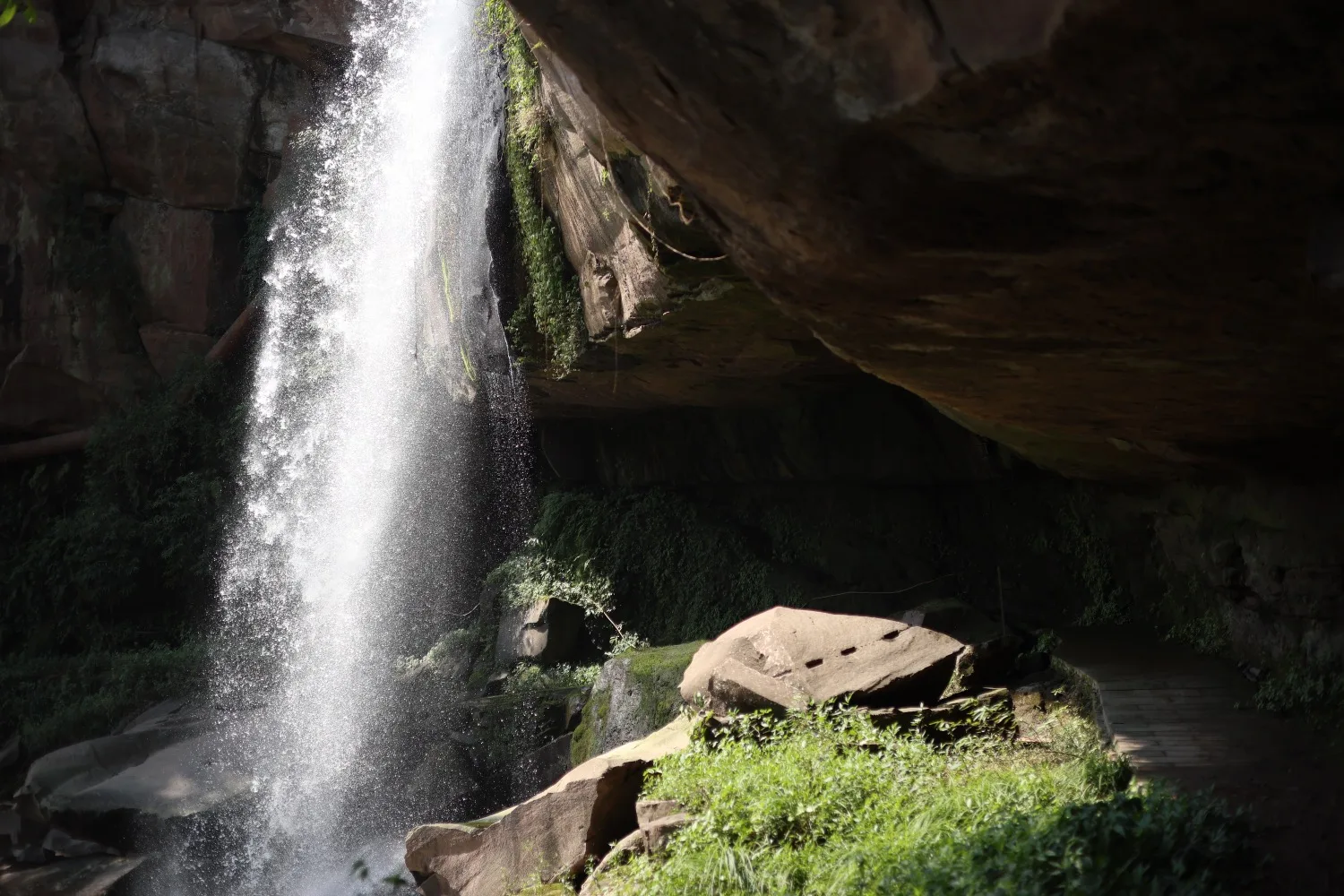
During the rainy season (May to August), the water surges with unstoppable force, plunging down the rock face with a thunderous roar that echoes like the call of a mighty whale, reverberating through the serene valley.
Turtle Stone
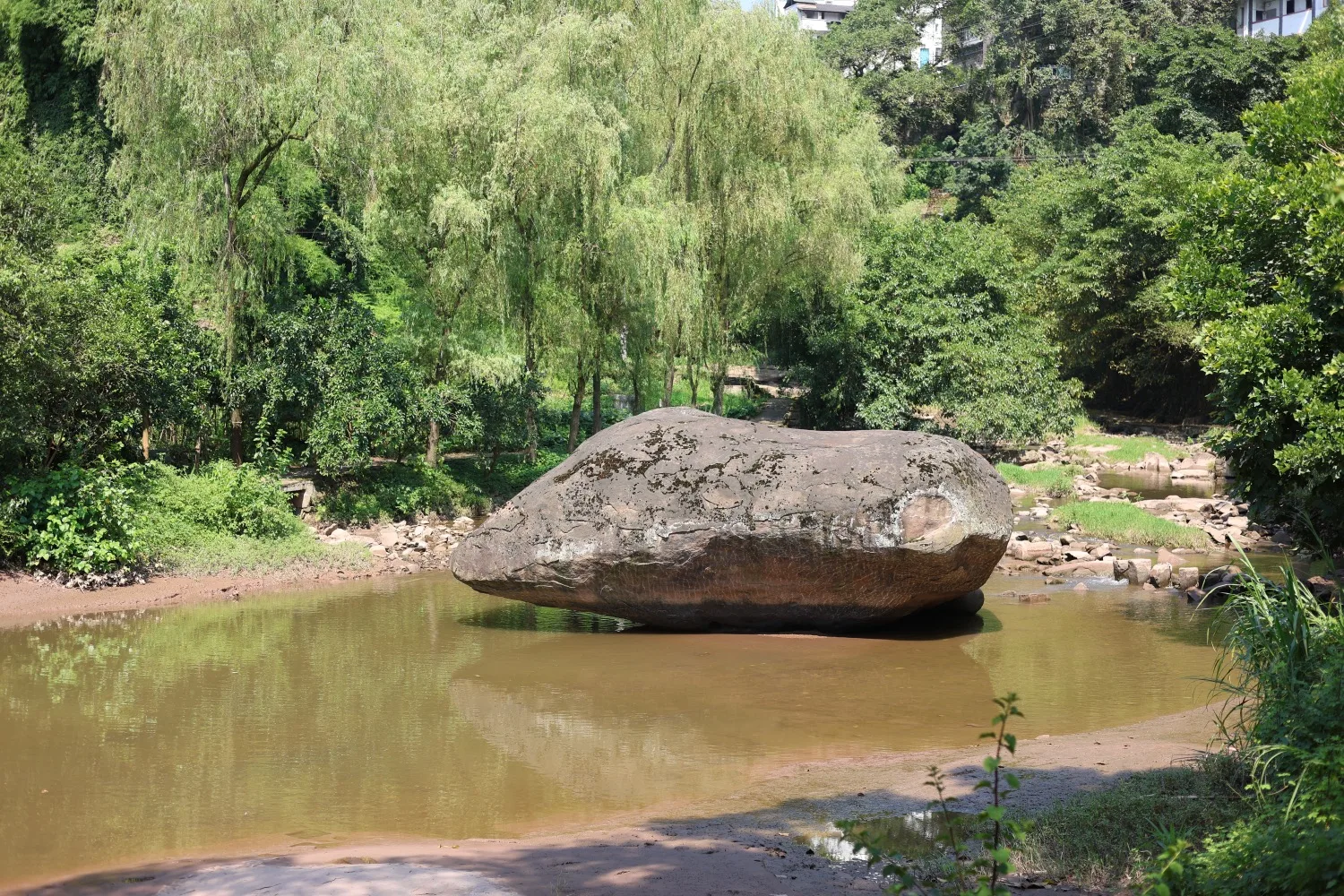
The Turtle Stone erched gracefully along a serene creek. This massive stone is steeped in local lore, said to be a guardian of mystical waters. According to ancient Chinese mythology, the creek’s flow connects directly to the East Sea, the fabled realm of the Dragon King, who commands the oceans, rivers, rains, and all waters of the world.
The legend tells of a time when, during the rainy season, great whales would journey from the East Sea to this very creek, accompanied by a loyal turtle. Over centuries, this turtle transformed into the enduring Turtle Stone, forever watching over the waters of Dongxi.
Yanma Ancient Trail

The Yanma Ancient Trail—also known as the Salt and Horse Ancient Trail—is a living testament to the vibrant past. This historic pathway once pulsed with the energy of merchants traveling between Chongqing and Guizhou, their horses laden with salt, tea, and goods, guided by the rugged terrain and the flow of nearby rivers.
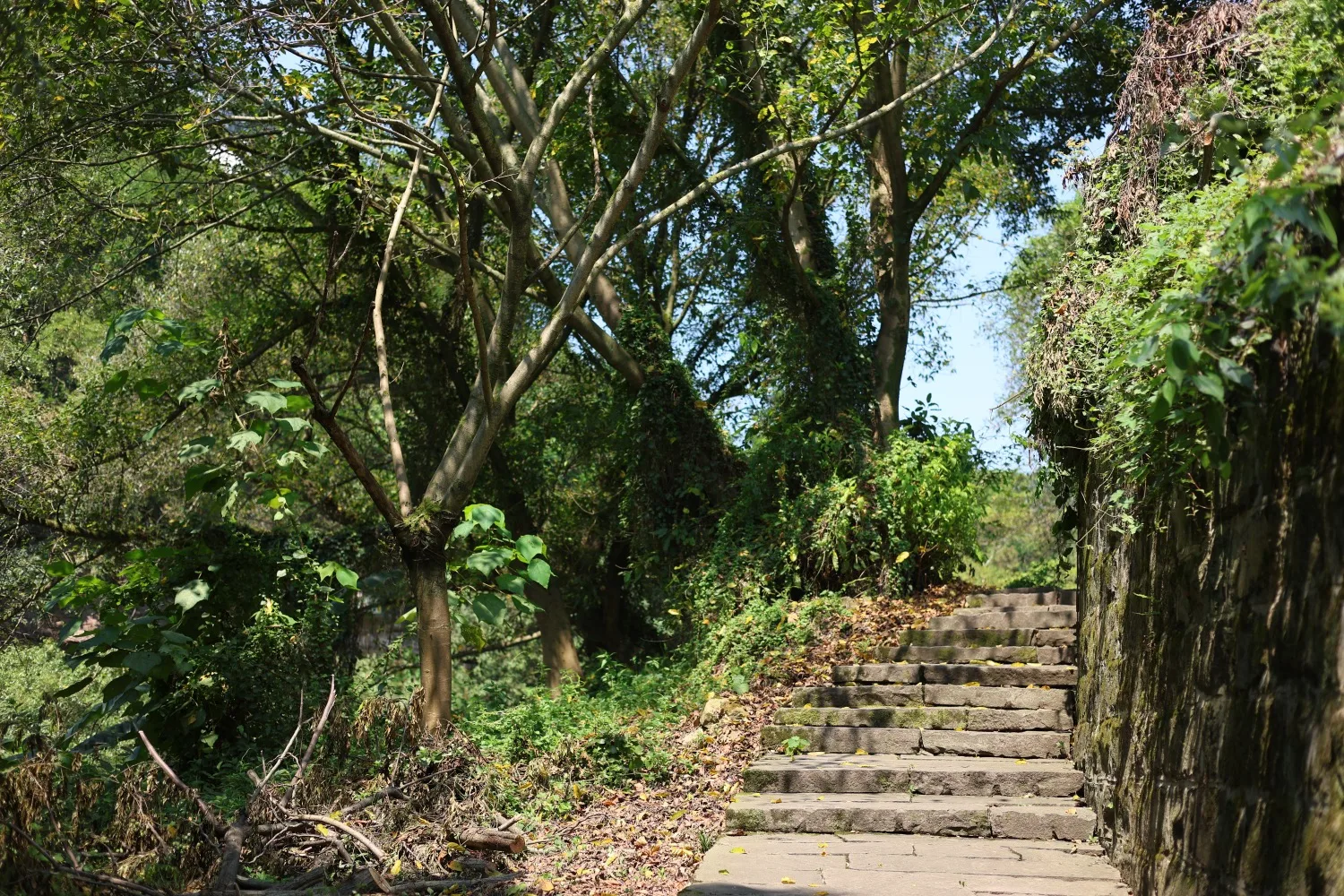
As a crucial trade route, the trail cemented Dongxi’s role as a vital hub for commerce and cultural exchange in ancient times, connecting distant provinces and fostering a legacy that lingers today.
Alley Art
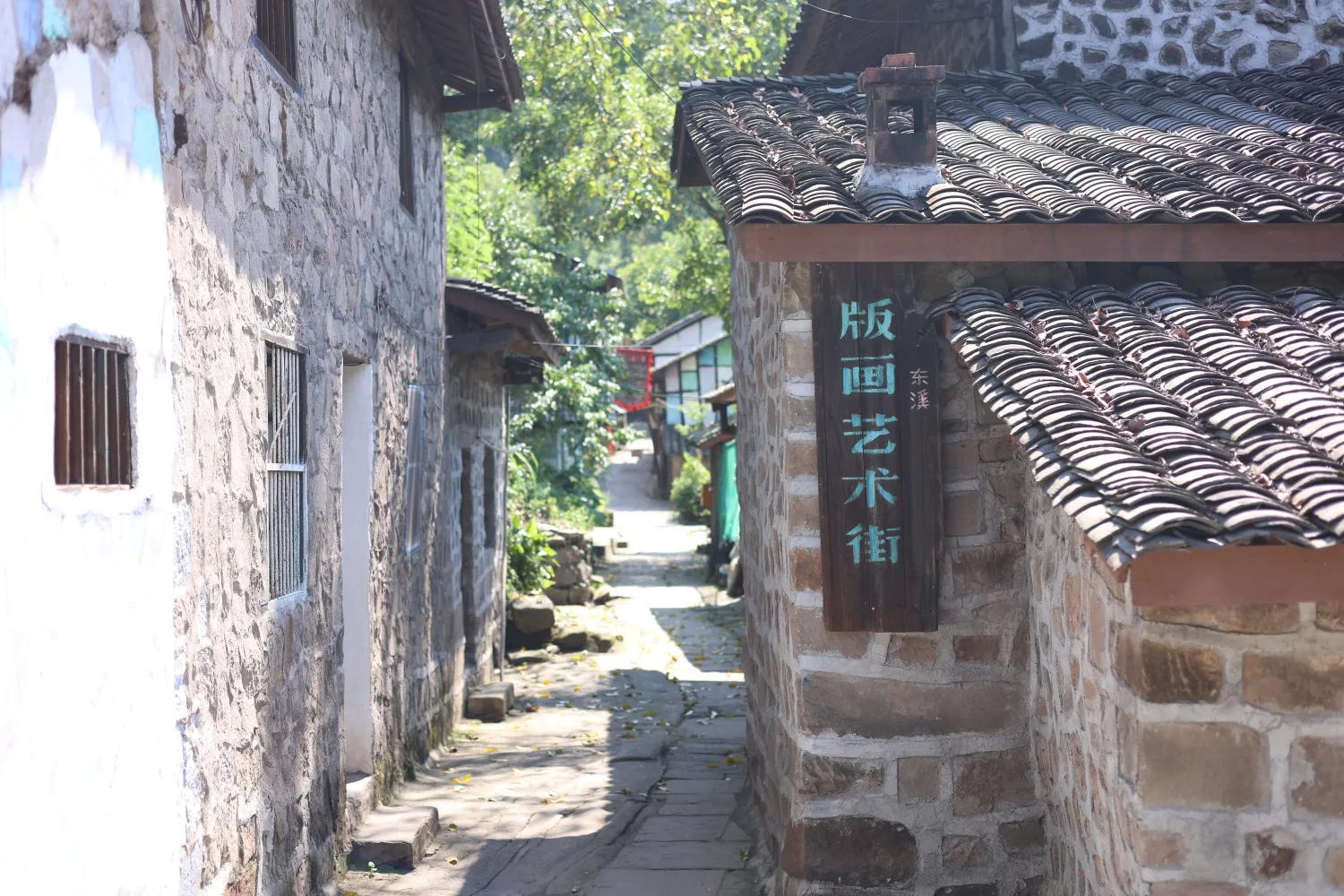
Local artists have transformed a section of the trail into a living art gallery with many artworks on the walls.
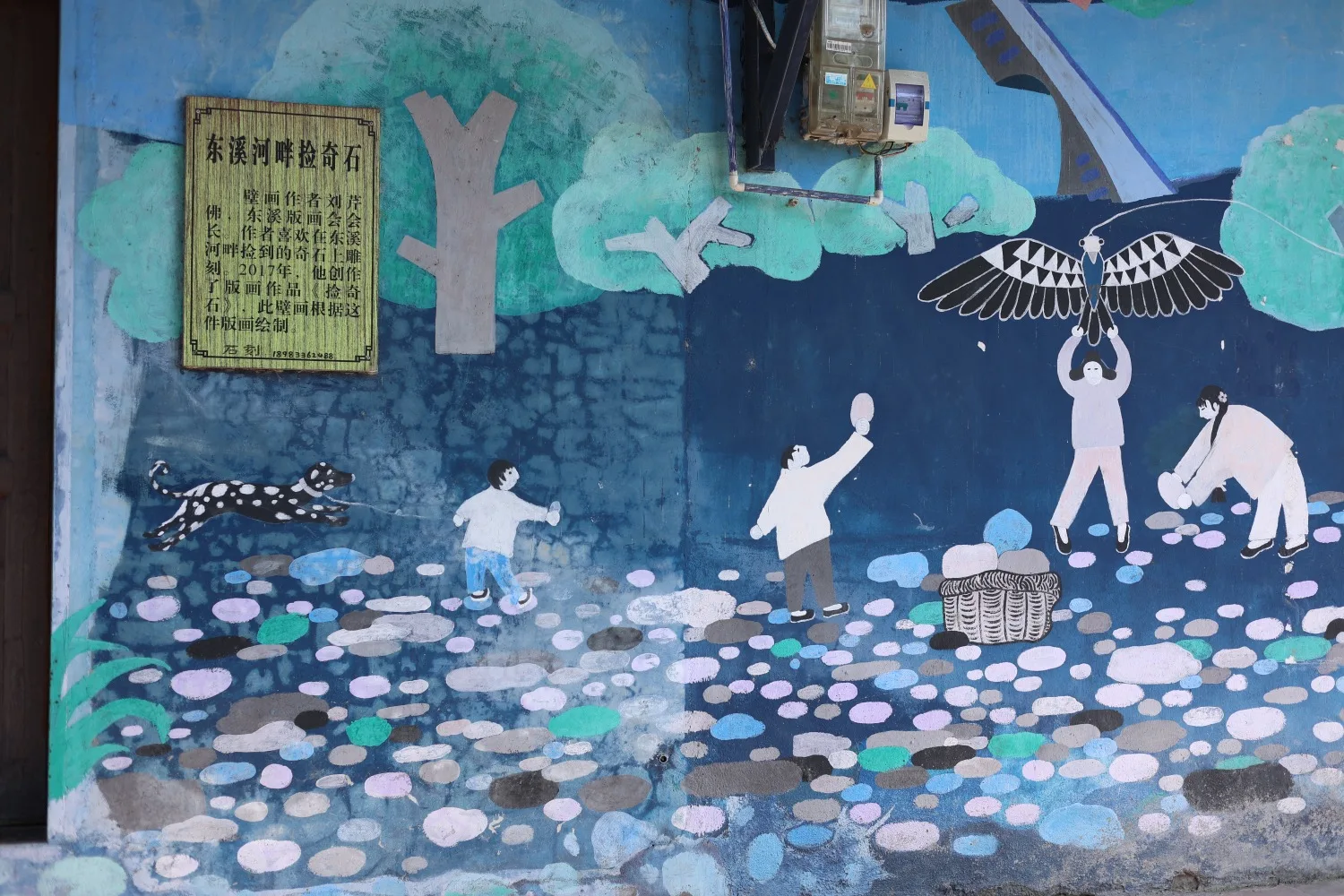
A particularly interesting one drew my attention as the description said the artist loves to find unusual and strange stones along the river. The artist would collect these unusual stones and make artwork on them. This painting mimics that scene.
Taiping Bridge
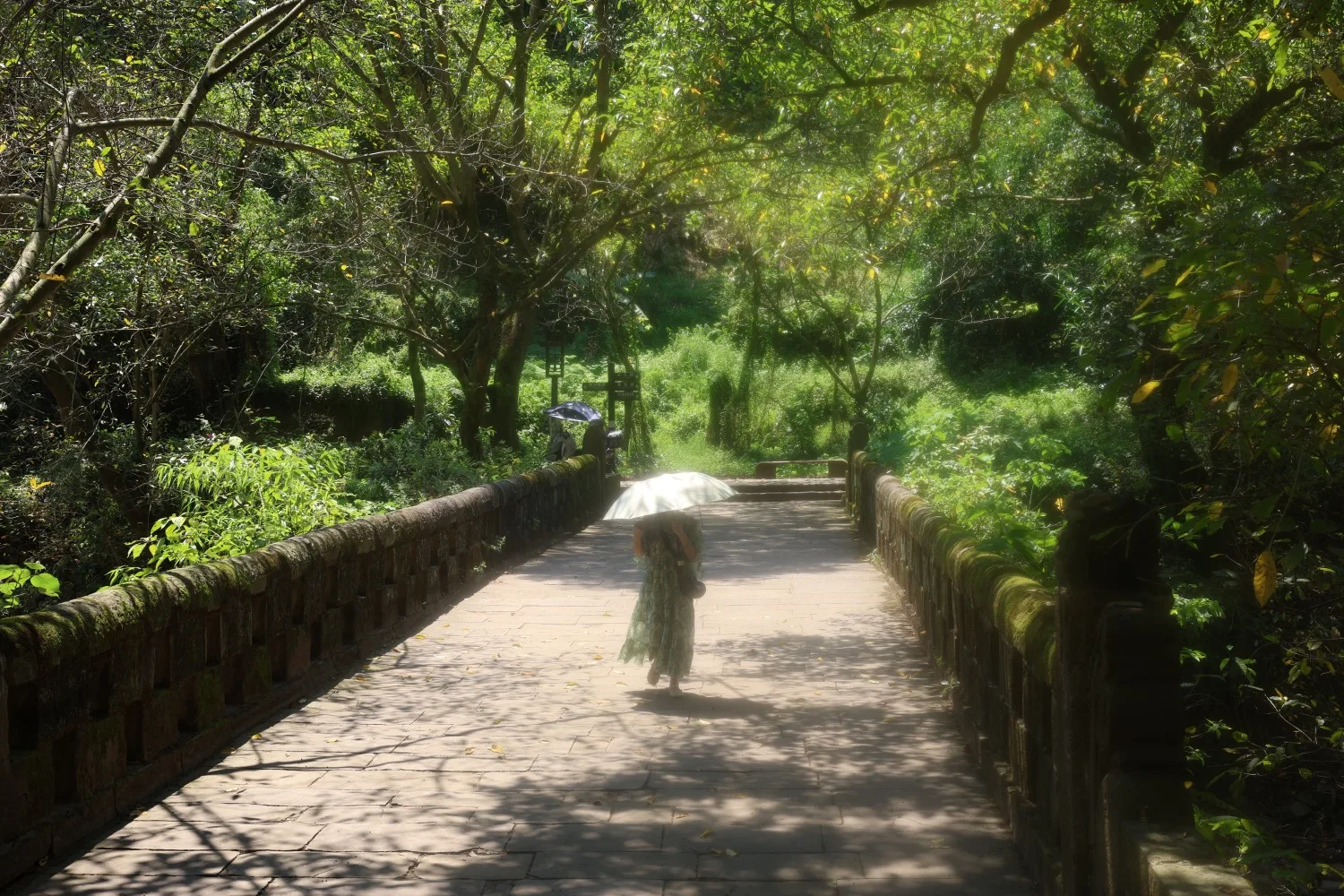
Taiping Bridge stands as a timeless sentinel along the ancient Chongqing-Guizhou Salt and Horse Trail. Built in 1370 during the third year of the Ming Dynasty’s Taizu reign, this 30-meter-long, 5-meter-wide single-arch stone bridge is a masterpiece of ancient engineering and a hallmark of the region’s storied trade history. At one end, a solitary Ming Dynasty stone lion stands guard, its intricate carvings softened by time yet brimming with regal charm.
Nanping Lao Stone Tablet
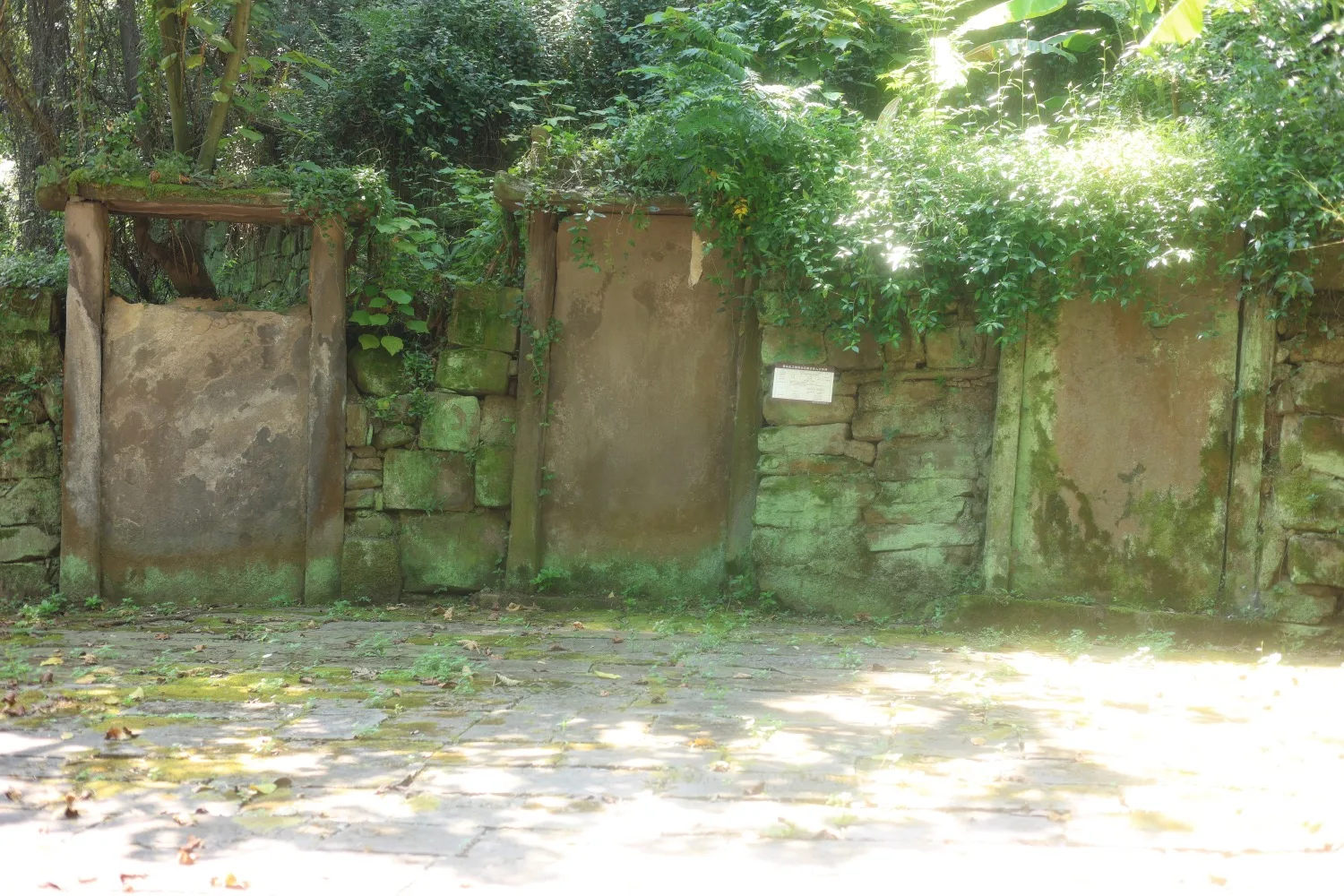
The Nanping Liao Stone Tablet stands as a silent witness to a forgotten era. Carved during the Han Dynasty (206BCE–220 CE), this ancient stone tablet bears the weathered traces of the Liao people’s script, an enigmatic testament to a once-thriving ethnic group in Southwest China. Though the inscriptions were still legible at the turn of the 21st century, centuries of wind and rain have now blurred the characters, leaving behind a mysterious relic that invites travelers to ponder its secrets.
Taiping Bridge Power Station
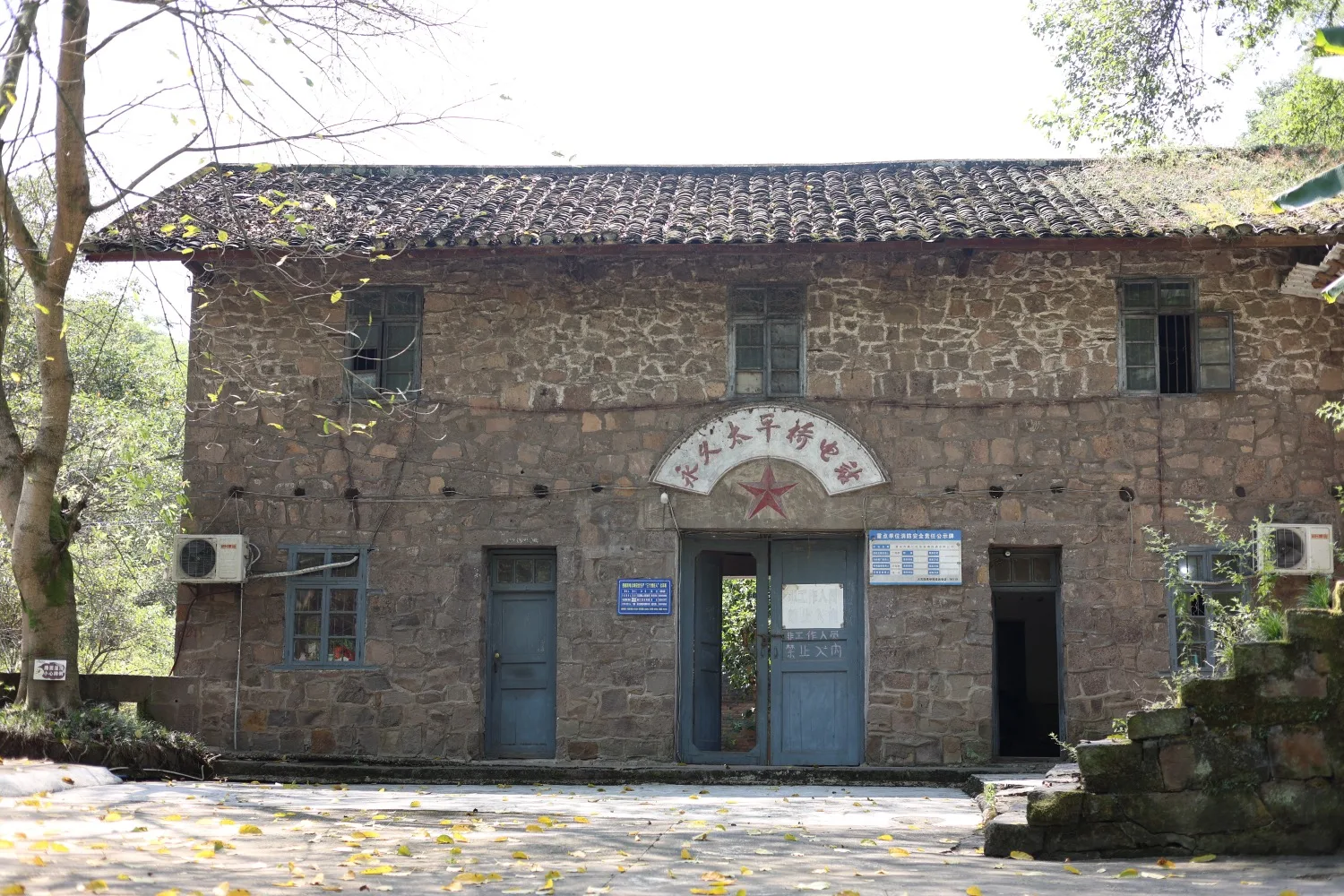
Seems like an old hydroelectric power station. I am not sure if it is still in use.
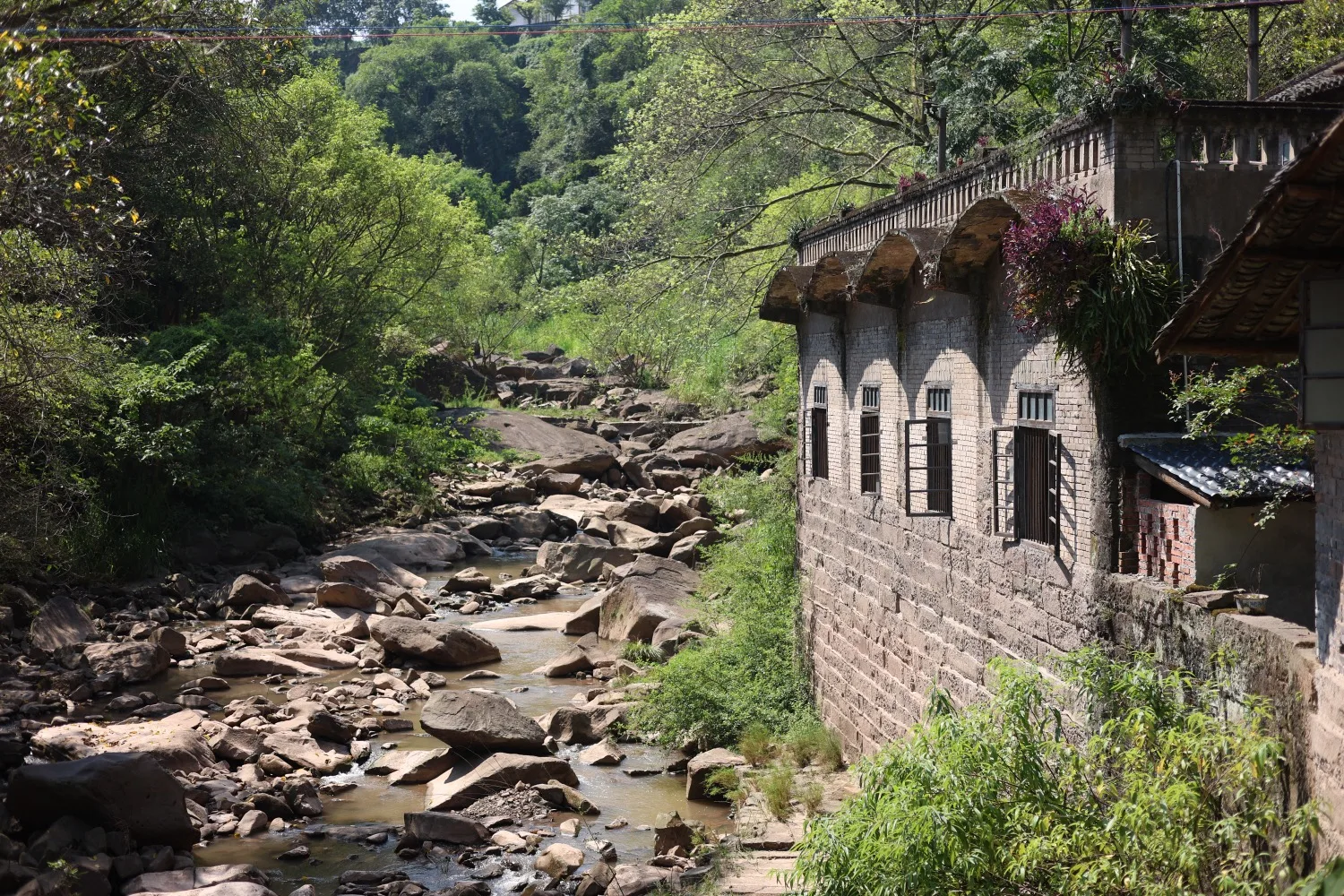
Qijiang Dongxi Ancient Town Recommended Travel Routes
- Parking Lot
- Maxiangyue Old Post Office
- Nanhua Palace
- Wantian Palace
- Dongxi Ancient Town Brick Wall
- Ancient Huangge Tree
- Spiral Stairs
- Ancient Huangge Tree
- Shangping Bridge
- Dajingyin Waterfall
- Turtle Stone
- Art Gallery Valley
- Ancient Salt and Horse Trail
- Taiping Bridge
- Yongle Hydroelectric Power Station
- Taiping Liao People Stone Tablet

Discover Chongqing with Haonan!
From mountains to grasslands, Chongqing has something to offer for everyone.
Start planning, find an inspiration, or search for a place.
Or follow us on social media.

